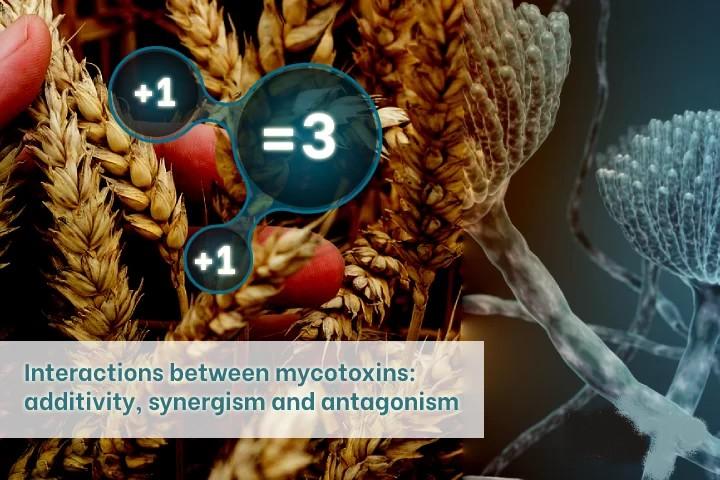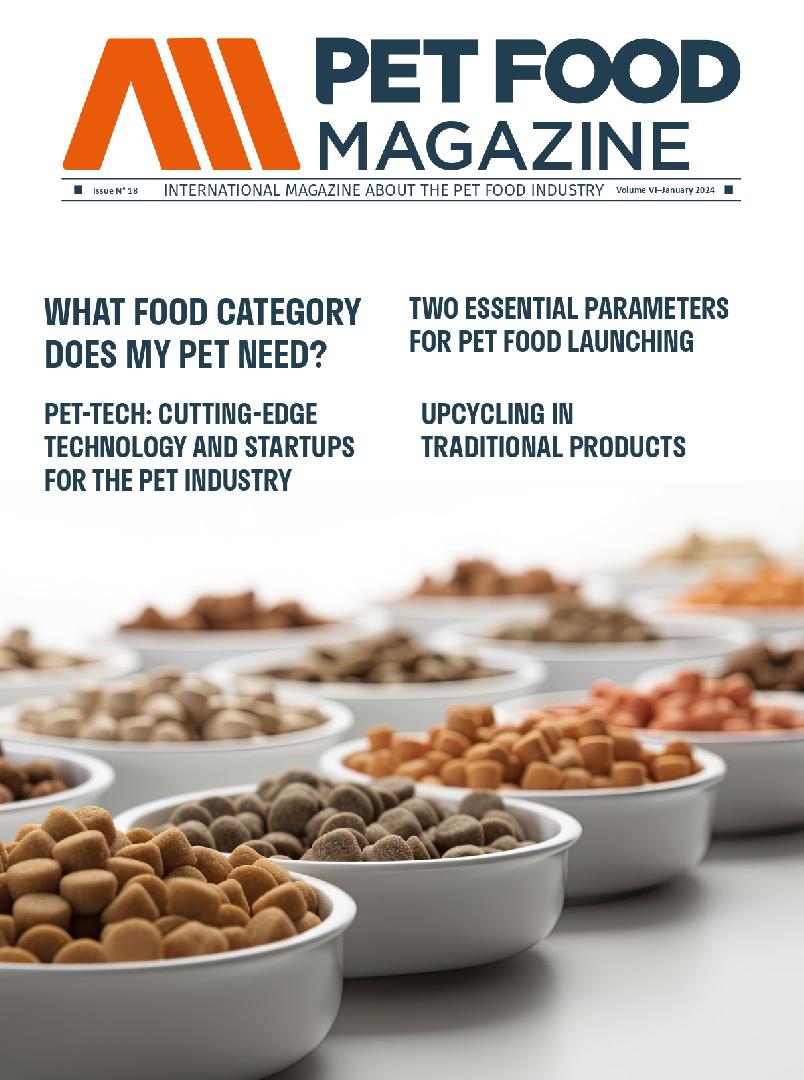In animal production and pets, the clinical signs of mycotoxicosis in the field can rarely been explained by the very low levels of mycotoxins present in the feed. However, the combination of mycotoxins can have a double effect as high as when those toxins are presented individually. Despite the magnitude of this challenge, the literature on the combination of toxins is still limited, especially with regards of trichothecenes (Pedrosa, 2010). The combination of several mycotoxins leads to the formation of different interactions that can be additive, synergistic or antagonistic (Greco et.al, 2014).
It should be noted that the type of interaction varies depending the animal species, sex, age, mycotoxin dosage, duration, nutritional status of the animals and the route of exposure to the mycotoxin (Gruber, Jenkins, & Shatzmayr, 2019).
Additivity
Additivity refers to the effect of the combination of mycotoxins being the same as the sum of the individual effect of each toxin. When the combination of mycotoxins presents the effect of the most toxic mycotoxin without the effect of the other mycotoxin, the term 'less additive' is used (Smith et.al, 2016). Some examples of mycotoxin combinations that exhibit additivity include Aflatoxin B1+ Ochratoxin A, Aflatoxin B1+ Toxin T-2, Aflatoxin B1+ Fumonisin B1, Ohcratoxin A+ Toxin T-2, DON+Fumonisin B1, Moniliformin+Fumonisin, Moniliformin+ DON, Fumonisin B1+ Diacetoxyscirpenol and Fumonisin B1+ Toxin T-2 (Aihelen, 2021).
{{editor}}
Antagonism
Antagonism refers to the combination of mycotoxins having a lesser effect than the sum of the individual effects of the toxins (Smith et al., 2016). In other words, the concept of antagonistic effect applies when the toxicity of one compound is used independently of the toxicity of the other compound (Ruiz, Macakova, Garcia, & Font, 2011). It has been reported that the combination of DON and zearalenone has an antagonistic effect on immune function in pigs. Similarly, the same antagonistic effect was reported in mice, but on liver health and metabolism (Gruber, Jenkins, & Shatzmayr, 2019).
Sinergism
Synergism between mycotoxins is defined as the toxic effect exerted by the combination of various mycotoxins at certain concentrations that is greater than the sum of the effects of each mycotoxin when presented individually (Gimeno & Lígia, 2011).
In other words, synergism is when the observed effect of the combination of mycotoxins is more than what is expected based on the effects of each mycotoxin. When one or more mycotoxins do not induce an effect while the combination does have a significant effect it is called potentiation, although this term is rarely used (Smith et.al, 2016).
Synergism increases the toxic effects of mycotoxins, and some of the synergistic actions are presented by aflatoxins with ochratoxin or aflatoxins with T-2 toxin (Greco, Franchi, Rico, Pardo, & Pose, 2014).
In Fusarium-derived mycotoxins, most interactions range from additive to synergistic, affecting mortality, animal growth, and feed intake. Several reports indicate synergistic interactions of deoxynivalenol with fusaric acid, DON with fumonisin B1, or even diacetoxyscirpenol and aflatoxins. (Pedrosa, 2010)
The challenge of the interaction between mycotoxins in animal production
Nowadays, most of the studies on the combination of mycotoxins in animal nutrition are conducted in vitro using cellular models instead of animal models. There is a huge diversity of interactions that mostly have additive or synergistic effects, and given the complexity of the mycotoxin mixture, their combined toxicity is difficult to predict.
The toxic effects presented by cells vary according to: cell type, exposure time, mycotoxin concentration, tests used, and statistical models. With these mentioned factors, the mycotoxin combination undoubtedly represents a threat to human and animal health since the toxicity of each combination will be different for each contaminated feed; not to mention that mycotoxins when combined can generate a toxic effect, even if they are present at low concentrations (Smith et al., 2016).
Finally, there is a lack of studies that address topics such as exposure to sub-toxic concentrations of mycotoxins from multi-contaminated feed, as it is a more realistic scenario for food and feed consumption.
by Bionte Technical Department
All Pet Food
You could be interested: What to Know About the Mysterious Respiratory Illness Affecting Dogs


























































